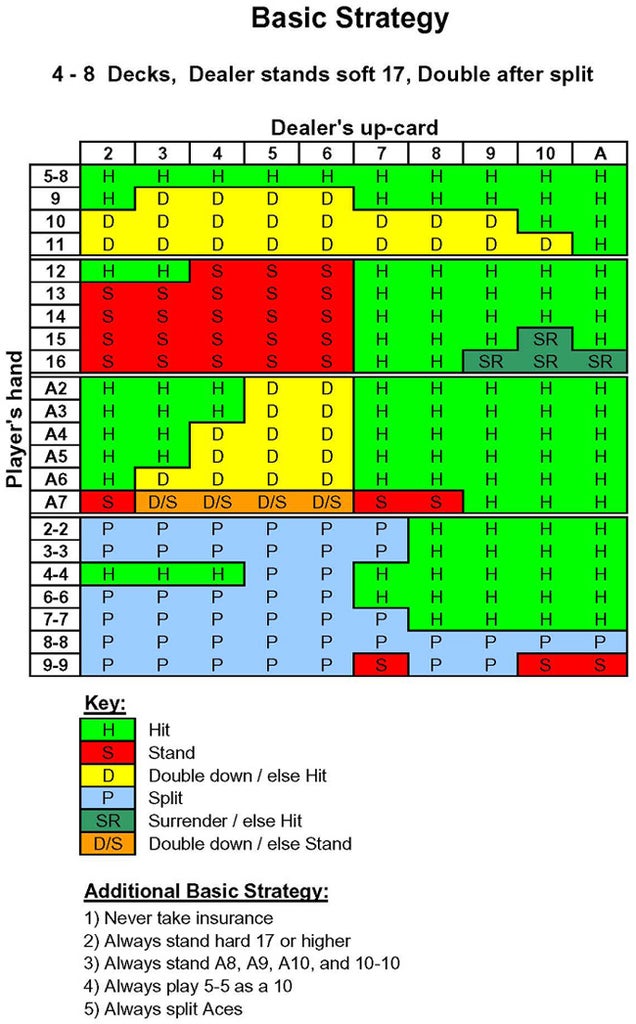How Much Should You Bet In Blackjack
Contents
Blackjack is a card game that is very popular in casinos; it is a game that is both easy to learn yet hard to master. Blackjack has been popularized in such films as 21 and other casino films such as Ocean's 13. However, with how easy the game is to learn and play, you. That also means you’ll be fine at a low-limit table to start, because your top bet is likely to be just $50. Overall, you’ll enjoy your blackjack most when you are comfortable, and while it should go without saying, it’s up to you to decide where to sit. Insurance is a side bet which you can take when the dealer's face up card shows an Ace. The worth of insurance bet should be half your blackjack bet. So if you placed a $100 blackjack bet, your insurance bet should be $50. If the dealer wins, you lose your bet but get paid on the insurance. On a $50-bet, you. $10,000 Bankroll – You could stay there and keep risk low at $16/hr. But if you’re still comfortable with 10% Risk of Ruin, you can get your EV into the $33/hr range with a 1-12 bet spread. That means you’re expected to double your bankroll again in about 300 hours of play.
Why the Blackjack Betting Strategy Matters
Blackjack Top 3 Side Bet
As the composition of the shoe changes, players are more or less likely to get blackjack based on the number of big cards left to be dealt out. It makes sense for players to bet large amounts when the odds are in their favor. The true count is what determines our advantage and ultimately the amount we should bet. The true count is fully explained in our blackjack card counting section.
The Kelly Criterion
The Kelly Criterion says that if a player knows his advantage then he should bet that percentage of his bankroll. For example, if the true count and the table rules indicate that the player has a 2 percent advantage and the bankroll is $2,500 then the bet should be 2 percent of $2,500 or $50. Many players do not have a $2,500 bankroll. As such, it is important to play at tables that have low enough minimums for players to capitalize when odds are favorable.



The World’s Greatest Blackjack Book does a nice job explaining the Kelly Criterion:
Trusting for now that you can gain an advantage with a counting system, the real question becomes: How should you bet in order to maximize your profits while minimizing your risk? Once again, the mathematicians have answered this one for us. According to Professor J. L. Kelly in 1956, the optimal betting method is to bet a percentage of your total bankroll that corresponds exactly to the percent advantage you have at any particular time. Professor Kelly and other scientists have proven both mathematically and in practice that this “Kelly Criterion” is the most profitable long-run method of wagering.
[The World’s Greatest Blackjack Book page 203]
MIT Betting Strategy
The old school MIT strategy is as follows when the count is +2 or more:
Amount to Bet = (True Count – 1) * Betting Unit
Using a table with a $5 minimum and a betting unit of $25, we have the following:
Count 0 or Less: bet $5
Count +1: bet $5
Count +2: bet $25
Count +3: bet $50
Bankroll Management
Most casual blackjack players have a smaller bankroll than the MIT team. As such, our betting strategy modifies their bet sizing table in order to reduce variance for small bankrolls.
Our Betting Strategy
Players bet the minimum when the true count is near 0 or less than 0.
We use a system where the betting unit matches the table minimum.
Here is our betting strategy on a $10 minimum table:
Count 0 or Less: bet $10
Count +1: bet $20
Count +2: bet $30
Count +3: bet $40
…
Count +x: bet 10*(x+1)
This betting strategy has less short term variance than the MIT betting strategy.
Hand Example
The true count is +2 and we’re sitting on a table with a $10 minimum. What should we bet for the next hand?
How Should You Bet In Blackjack
$30 is the answer based on our betting strategy above.
Another Hand Example
The true count is +3 and we’re sitting on a table with a $10 minimum. How much do we bet on the next hand?
Blackjack With Side Bet Games
Referencing our betting strategy above, we bet $40 on the next hand.



